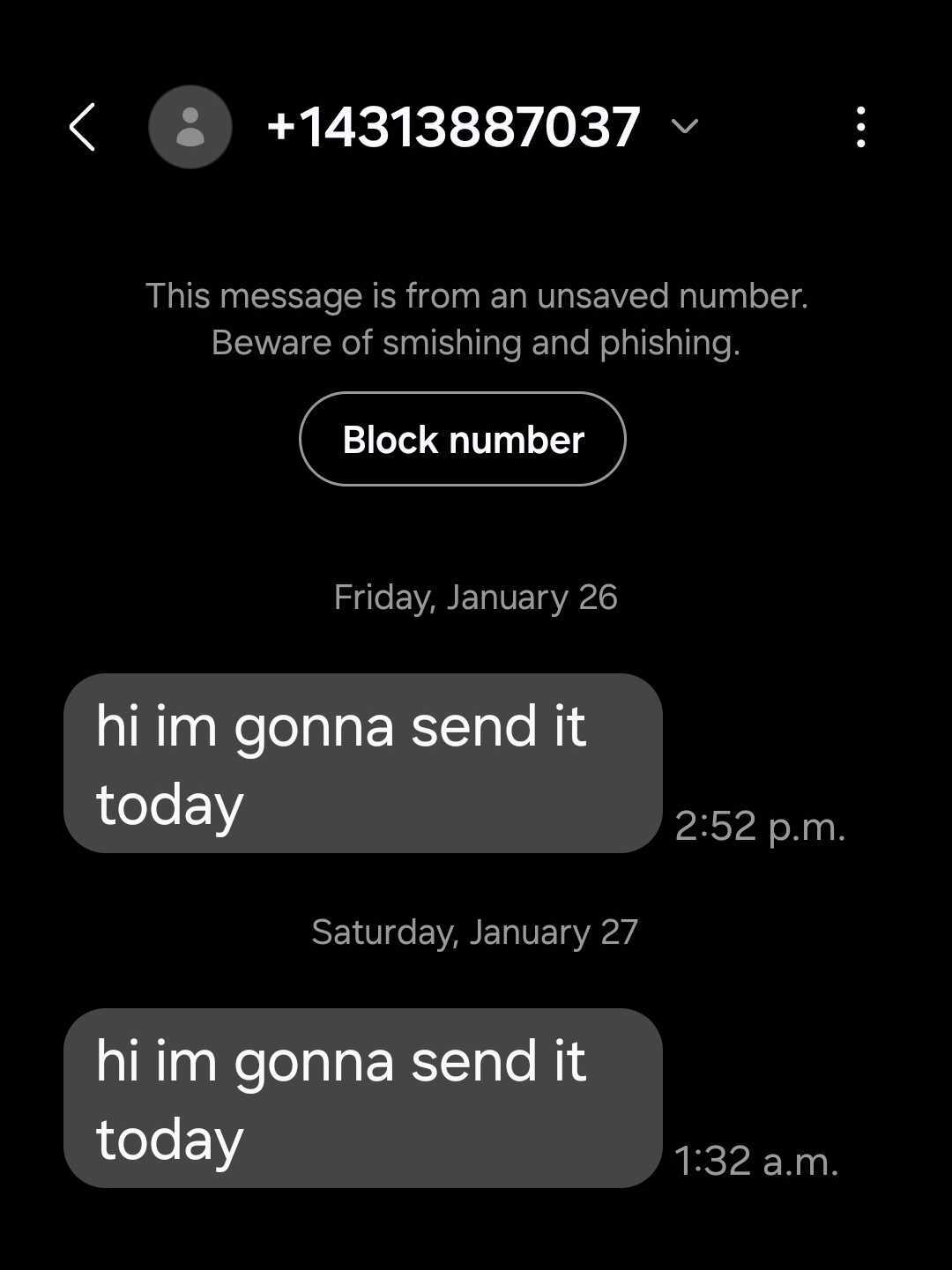New ‘going to send it’ scam making its rounds in southern Ontario
Published January 27, 2024 at 11:25 am

Another day and another scam is circulating Mississauga, Brampton, Halton and Hamilton.
The scam starts with a text message from an unknown number informing the recipient that they are “going to send it.”
However, the sender does not specify what “it” is, intentionally leaving the conversation open with the expectation that the recipient will respond.
According to the Canadian Anti-Fraud Centre (CAFC) this is an example of a smishing attempt which is a text message variation of phishing.
Scammers will try to get personal information like bank accounts and Social Insurance Numbers (SIN) to steal money or commit other fraud.
In many smishing schemes, scammers will pretend to be well-known businesses raising concerns about service issues between the client and the company.
These fraudulent messages typically contain hyperlinks that when clicked on, will redirect the victim to a deceptive page.
On this page, individuals are prompted to verify their identity by entering personal details such as home addresses and passwords.

In this instance, it appears the recipient did not reply to the text message. Consequently, a duplicate message was sent out a day later, making it seem like the person is urgently reaching out.
Additionally, recipients of such messages may want to take a look at the area code from which the text message was received. A quick Google search reveals that the number belongs to the province of Manitoba. As a result, the individual may choose to ignore the message and perceive it as an attempt to scam them.
The Canadian government, on its website, offers safety precautions to residents to protect themselves and their devices against smishing scams:
- If uncertain about the authenticity of a text, verify with the sender using an alternative method such as the phone number listed on the business’ official website.
- Avoid clicking on suspicious links or responding to questionable texts. Instead, manually type the web address into a browser when possible.
- If you suspect a smishing attempt, delete the message and block the number. Refrain from responding, even if the text instructs you to text “STOP” or “NO” to halt messages. Responding may confirm to the spammer that your phone number is active, leading to more smishing attempts.
- Forward any spam text messages to 7726 (SPAM on most keypads). This action notifies your phone provider, allowing them to block future texts from that specific number.
